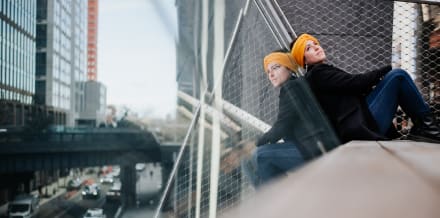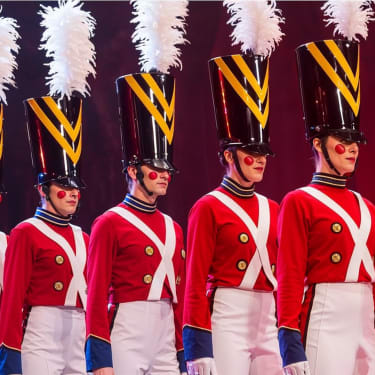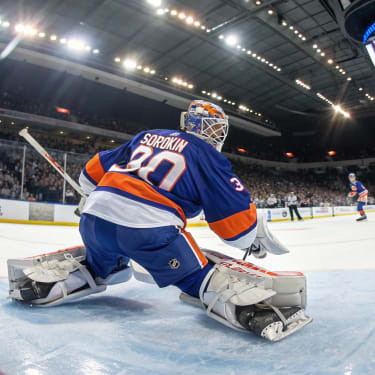More about: Guide to the High Line in New York City
After Central Park, the High Line has become the most visited park by tourists and New Yorkers alike, who come to escape the concrete and enjoy a green space and the best views of the city. It is located on an old railway line that was abandoned until a few years ago and ends at Hudson Yards, Manhattan's trendy neighbourhood.
Its unique design blends art and nature, and you'll follow a really cool route that crosses Chelsea and reaches the Meatpacking District from Hudson Yards (or vice versa). Afraid of getting lost? Book a guided tour of the High Line, Chelsea and Meatpacking. Here's the High Line route I recommend:
1. Start with the first section: Hudson Yards
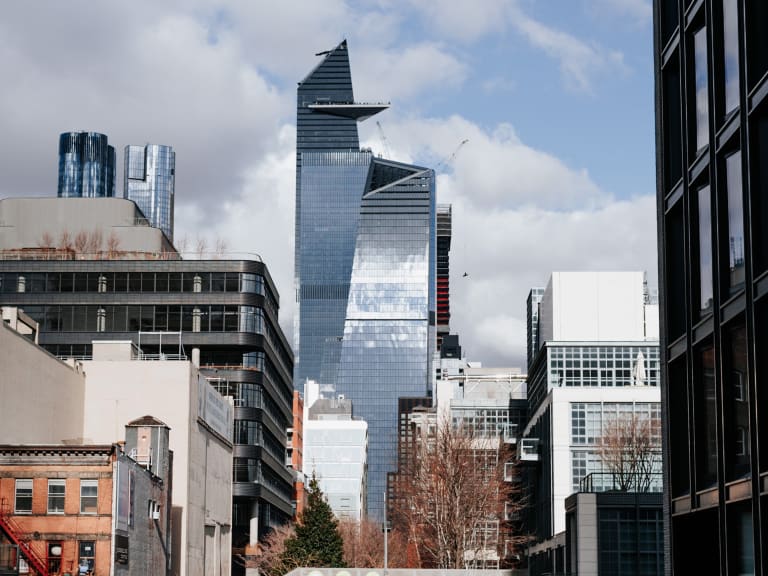
I suggest starting your visit at 34th Street in Hudson Yards. Before entering the High Line park, take advantage of being in Manhattan's trendiest up-and-coming neighbourhood, full of shops, luxury skyscrapers and fashionable restaurants. The entrance to the High Line in this area is via a ramp, which is an advantage for people in wheelchairs or pushing a baby stroller.
Marvel at the skyscrapers of Hudson Yards
Located on what was once a dreary train depot next to the Hudson River, a modern residential and leisure district known as Hudson Yards is now being built, the trendiest part of Midtown in the Big Apple.
An area with great potential that already has some brand new tourist attractions such as The Edge observatory, The Vessel, the Little Spain food market and The Shed cultural centre. This neighbourhood is definitely worth a visit because you're going to have a great time. Check out my guide to Hudson Yards to find out what you can't miss, and book your guided tour.
2. Continue on to The Spur
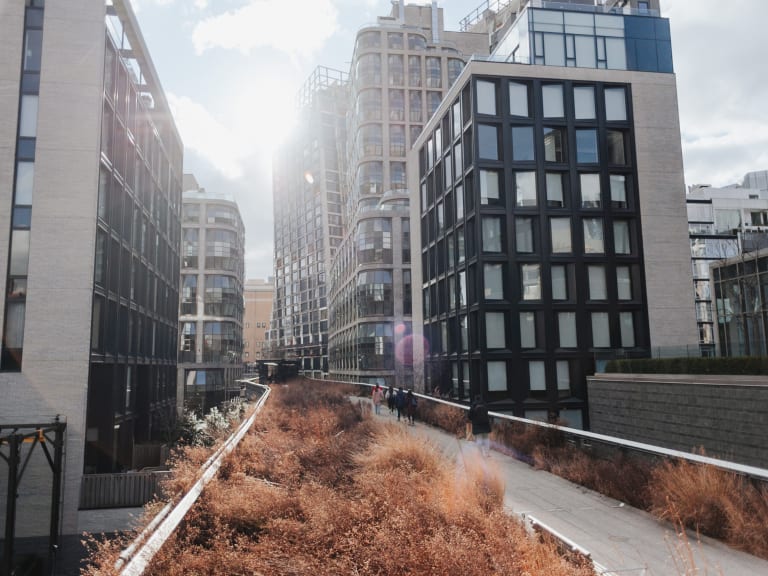
During this part of the tour, you'll walk among skyscrapers and designer buildings. The contrast between the different shapes, decorative elements and height of the buildings is striking, although to be honest, being in New York, you'll always feel like an ant among these enormous structures. The ones located at the 28th Street entrance are amazing, so don't forget to take some photos.
There are also some beautiful sculptures at this point, such as Love&Amor, and in certain places the vegetation grows so lush that it invades the path and for a moment it feels like you're in the middle of a forest. However, the car horns in the background remind you that you're still inside New York's High Line Park.
3. Stop along the way to enjoy the street art
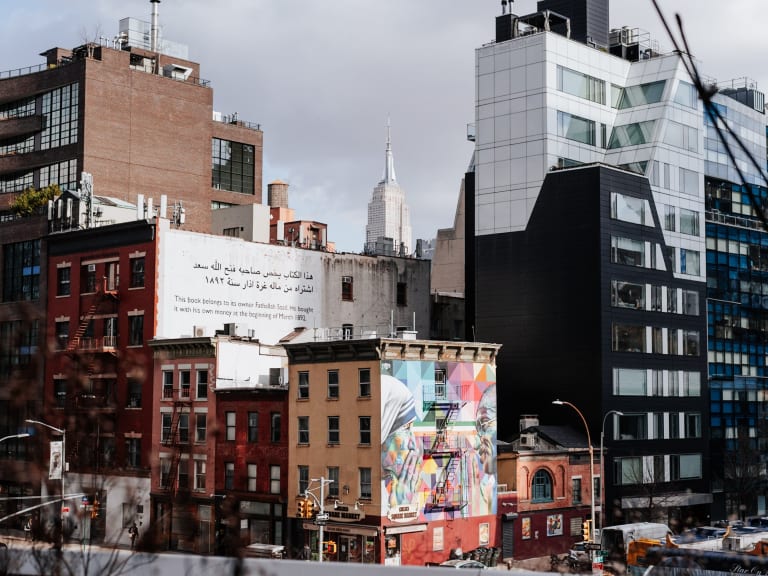
In addition to the art you'll see along the High Line Park, if you pause on the tour to exit at 23rd Street, you can take a stroll around the area to see some of the graffiti by Brazilian artist Eduardo Kobra.
- Mount Rushmore, on the façade of the Empire Diner restaurant, pays tribute to artists such as Andy Warhol, Frida Kahlo, Keith Haring and Jean-Michel Basquiat.
- Tolerance, which pays tribute to Mother Teresa of Calcutta and Gandhi.
- We love NY², features Einstein expressing his love for New York squared.
Take the opportunity to take some photos
With some great photos as souvenirs, return to the High Line park to continue the route. Don't put your camera away because a little further on, on the left, there is a very unusual sculpture under whose arch you can take some more photos.
4. Cross Chelsea
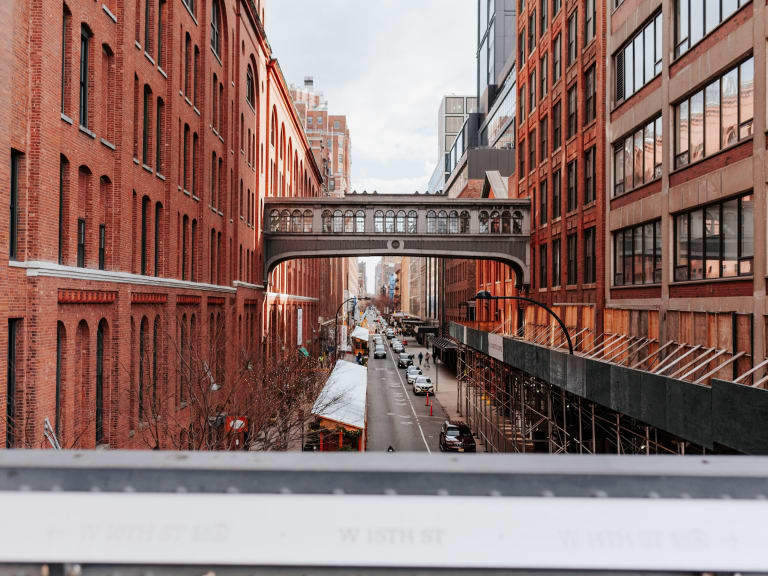
We've reached the last stretch! At 10th Avenue is the High Line Observation Deck, a viewing platform where you can rest for a while and take in the views before entering a small area where you can buy High Line Park souvenirs and food (ice cream, empanadas, German currywurst, etc.) from small stands.
The views of Chelsea Market
In this third section of High Line Park, I recommend making another stop along the way, as at 10th Avenue and 15th Street you'll see a kind of bridge connecting two buildings in Chelsea that currently house Chelsea Market.
This is one of New York's most famous food markets, which was formerly the Nabisco biscuit factory. The place that invented Oreo cookies! In fact, if you look closely, the walls of the market are covered with references to them. If you feel like buying something to snack on in this area, you'll find some tables where you can eat in peace. Anyway, I'll tell you where to eat near the High Line later on.
5. Relax on the last stretch, the quietest part
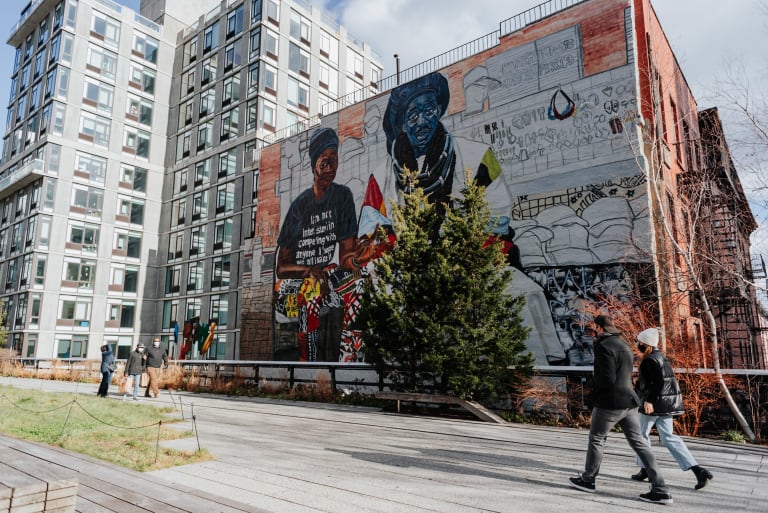
If you continue walking a little further along the High Line, you'll come to one of my favourite spots: the wooden deck chairs. Here, you can relax in the sun or under the shade of a tree, or take off your shoes and cool your feet in the water that flows from the tracks, which is very welcome in summer. It's like a little oasis in the middle of the High Line!
The good thing about this area of High Line Park, now in the southern part of the route, is that it's not as crowded as the previous sections and there's plenty of shade, which is especially welcome on hot days. The next thing we'll see on the tour, right in front of us, is The Standard hotel, whose rooftop bar has great views of the city.
On the left is the entrance to Gansevoort Street, which means that the walk through High Line Park is over. But the fun isn't over yet! If you like modern art, I recommend going down the stairs and then heading to the Whitney Museum, which specialises in 20th-century American art.
6. Breathe in culture in the Meatpacking District
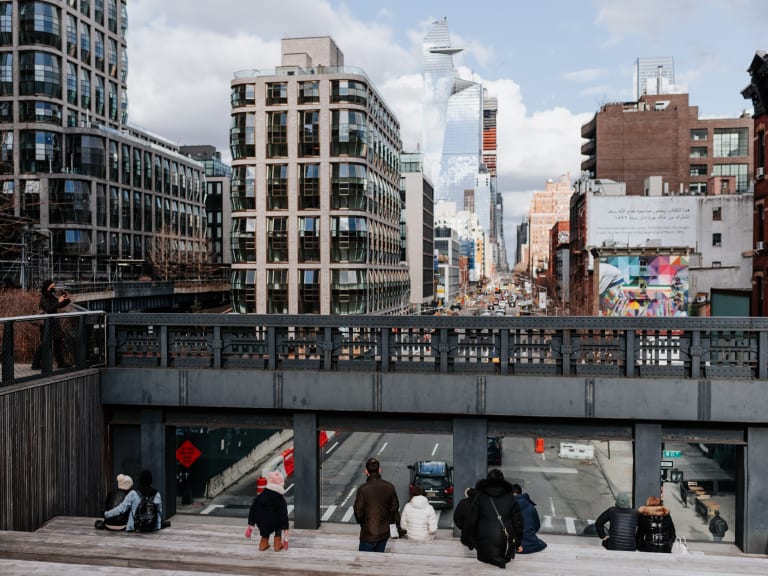
The Meatpacking District is a small area of Greenwich Village well known for its bars, hotels, art studios and sophisticated boutiques. Its industrial-looking buildings and cobbled streets still remind us of its working-class past in the early 20th century, when this place was New York's largest meatpacking district (hence the neighbourhood's name). If you look closely, you can see a stark contrast with the avant-garde skyscrapers of Hudson Yards.
In the 1980s, it went through a difficult period when the neighbourhood fell into decline, but there is no trace of that era now and today it is a very popular place with a glamorous atmosphere and an alternative culture.
Climbing to the rooftop of The Standard hotel is an alternative to other viewpoints in New York. There is no entrance fee, but I recommend buying something at the bar if you want to see the skyline from there.
7. Eat like a king on the High Line
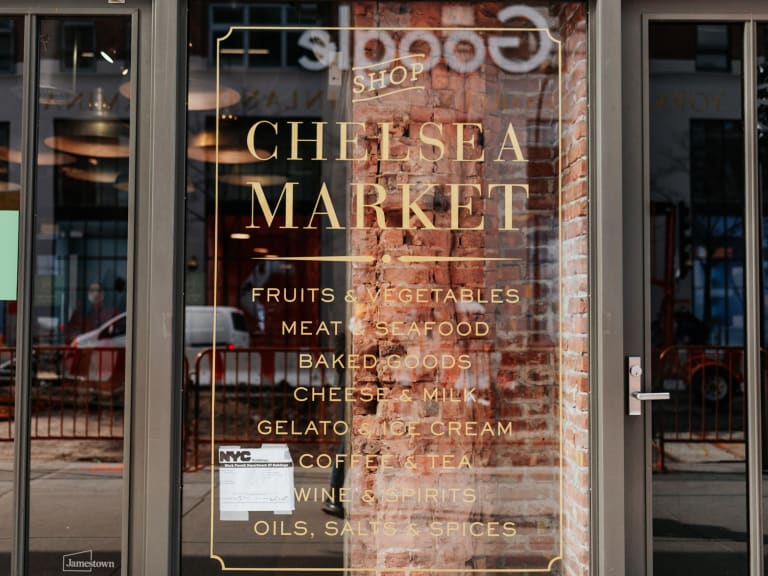
From a gastronomic point of view, few cities in the world can boast such a varied culinary offering as New York. The advantage of working up an appetite during your visit to High Line Park is that nearby you can choose from several delicious places to grab a bite to eat that will leave you with a great taste in your mouth.
Chelsea Market
I recommend visiting Chelsea Market, where you can try delicious dishes such as sushi, tacos, noodles, pasta and seafood (the market's speciality) at its fast food stalls. It also has sections dedicated to wine, coffee and sweets, so if you have any foodie friends, they'll be thrilled if you bring them back a tasty souvenir from New York.
Old Homestead Steakhouse
Next to Chelsea Market is Old Homestead Steakhouse, a temple for beef lovers and an icon of the Meatpacking District, as it has been open since 1868. Although there is also fish on the menu, the most popular dish and the one for which it is so famous is its steaks. The portions are high quality, delicious and quite generous, which is reflected in the price, by the way. However, I can assure you that you will leave satisfied and with a smile from ear to ear.
Little Spain Market
In Hudson Yards, don't miss Mercado Little Spain, a gastronomic space dedicated to the flavours of traditional Spanish cuisine by chef José Andrés and brothers Ferrán and Albert Adriá. Here you can indulge your appetite and order tapas, sandwiches, cocas, cheeses, Spanish wines, churros and much more. The best of Spanish cuisine outside Spain!
The Shops and Restaurants at Hudson Yards
Drop by this modern shopping centre to eat and do some shopping. There are plenty of restaurants to fill your boots, such as the famous hot dogs and burgers at Shake Shack, the spicy clams at Kawi or the breaded pork katsu sandwiches at Peach Mart. Yummy!
8. Visit at any time of year, any time of day
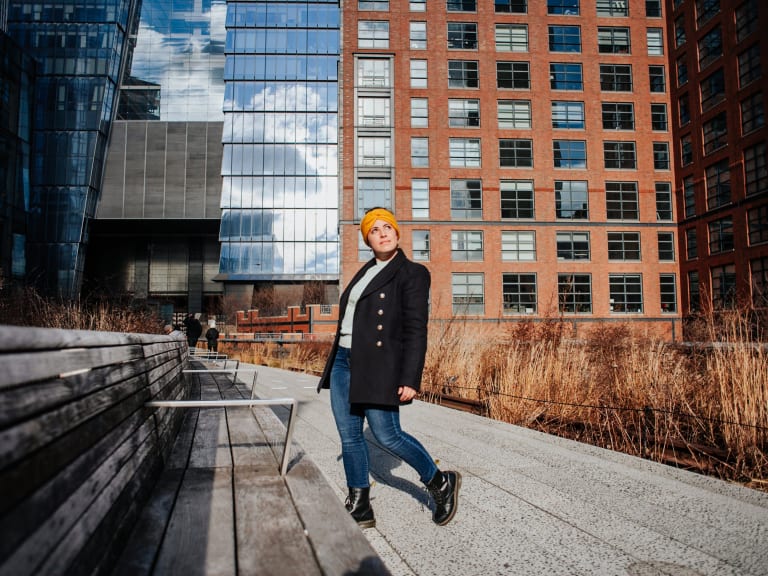
Since High Line Park is open all year round, any time is a good time to visit and enjoy a pleasant stroll in the open air in this area of New York. However, as it is a park, the landscape changes with each season.
In my opinion, the vegetation in High Park is at its most beautiful during spring and summer in New York. The trees are more leafy and the sun shines through the leaves, creating a beautiful play of light along the path. In addition, the park is full of plants and flowers that cover it with colour. In general, this is the best time to visit New York's best parks.
During autumn and winter, the days are shorter and the temperatures are lower. The vegetation is sparser and the landscape changes completely, although the snow gives it a special charm. In addition, there are always new art exhibitions to see, which is also an incentive to visit High Line Park during the colder months of the year.
And the best time of day?
I recommend setting aside some time first thing in the morning to explore High Line Park at your own pace, as the path is narrow and it is a very popular place that tends to get crowded easily (especially in the afternoons and on weekends). In some sections, you may feel like you are dodging people instead of strolling.
However, another option is to visit High Line Park in the late afternoon when it starts to get dark. The track is lit up from bottom to top and you can see the contrast between it and the buildings surrounding it. This is something very interesting to keep in mind, especially if you are a photography enthusiast.
Check out their calendar of events and visit with the kids.
9. Check the events calendar and visit with children
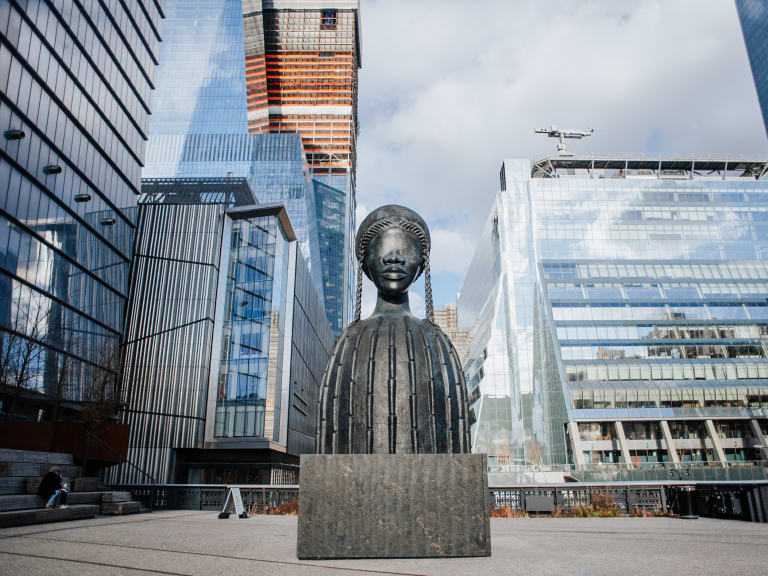
In addition to enjoying nature, outdoor art and a nice walk, High Line Park also hosts free astronomy events, Pilates classes and guided tours led by volunteers. You can check the calendar of activities and all the latest news about the park on the official High Line website.
Is it worth going with children?
Of course! They'll love having some time to play, and the High Line also hosts special events for children.
10. Plan your visit: practical information
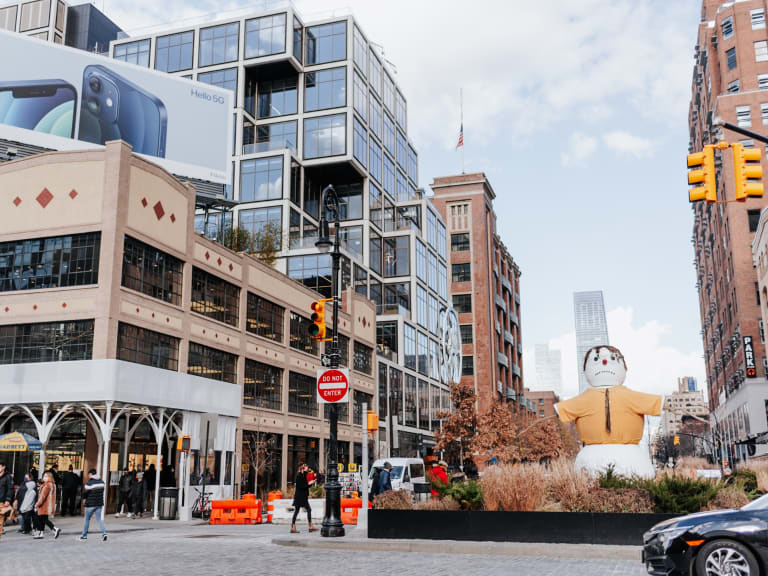
- Start: 34th St (subway: 34th St – Hudson Yards)
- End: Gansevoort St (subway: 14th St – 8th Ave)
- Hours: Monday to Friday from 7 a.m. to 7 p.m. Weekends from 10 a.m. to 6 p.m.
- Price: Free
Where is High Line Park?
High Line Park is located between Gansevoort Street and 34th Street. Its two-and-a-half-kilometre straight route begins (or ends, depending on the direction you take) in the north near Hudson Yards. It then crosses Chelsea and finally ends in the Meatpacking District next to the Whitney Museum.
The great thing about High Line Park is that there are intermediate access points along the route where you can get off to explore or rejoin the walk via lifts and stairs, so you can get to know the area at your own pace, stopping whenever you want.
Access to the High Line
- Gansevoort St (lift, public toilets and stairs)
- 14th St (lift and stairs)
- 16th St (lift, public toilets and stairs)
- 20th St (stairs)
- 23rd St (lift and stairs)
- 26th St (stairs)
- 28th St (stairs)
- 30th St (lift and stairs)
- 34th St (slope)
How long does it take to complete the route?
It takes approximately one hour to complete the High Line route, although it will take a little longer if you stop to take photos, enjoy the views, have a snack or rest on one of the benches or loungers.
But how did High Line Park come about?
The history of High Line Park dates back to the 1930s, when freight trains ran through the West Side of the city, supplying New York with meat. Later, when the motorway began to be used to transport goods, the tracks fell into disuse and weeds began to grow, giving them a neglected appearance.
In the 1990s, there were plans to dismantle the train tracks to make way for new construction, but a neighbourhood association in Chelsea with a keen eye called Friends of the High Line saved them from being torn down in order to preserve this little piece of the Big Apple's history.
Finally, it was decided to restore the tracks and transform them into an elevated urban garden, the first section of which was opened in 2009. The second and third sections were opened in 2011 and 2014 respectively, and The Spur, the latest addition, was completed in June 2019.
